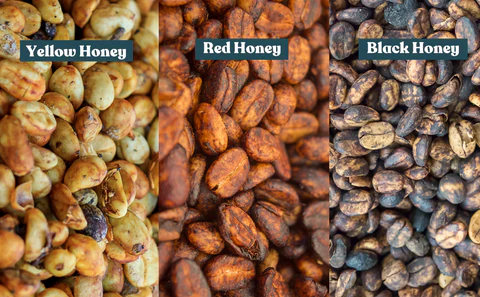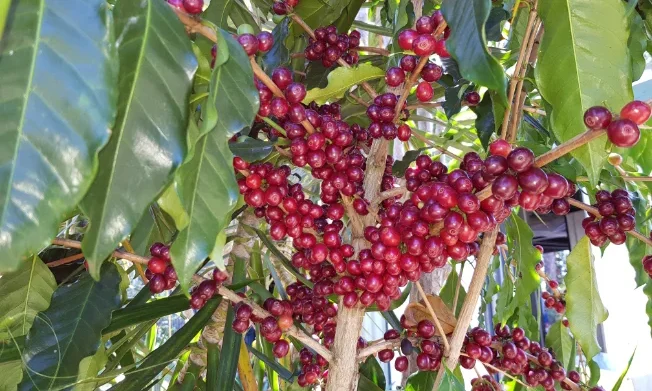Homegrown produce tastes better, right? Well, guess what, coffee is no different.
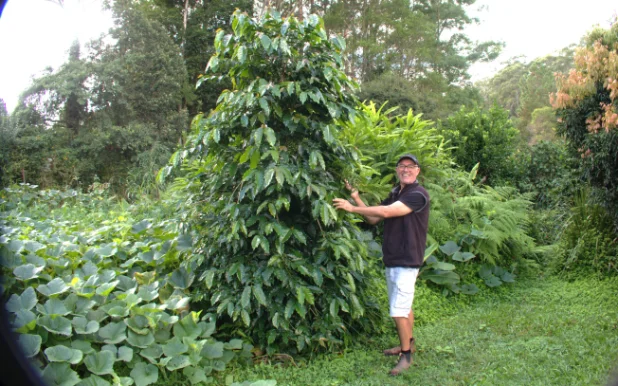
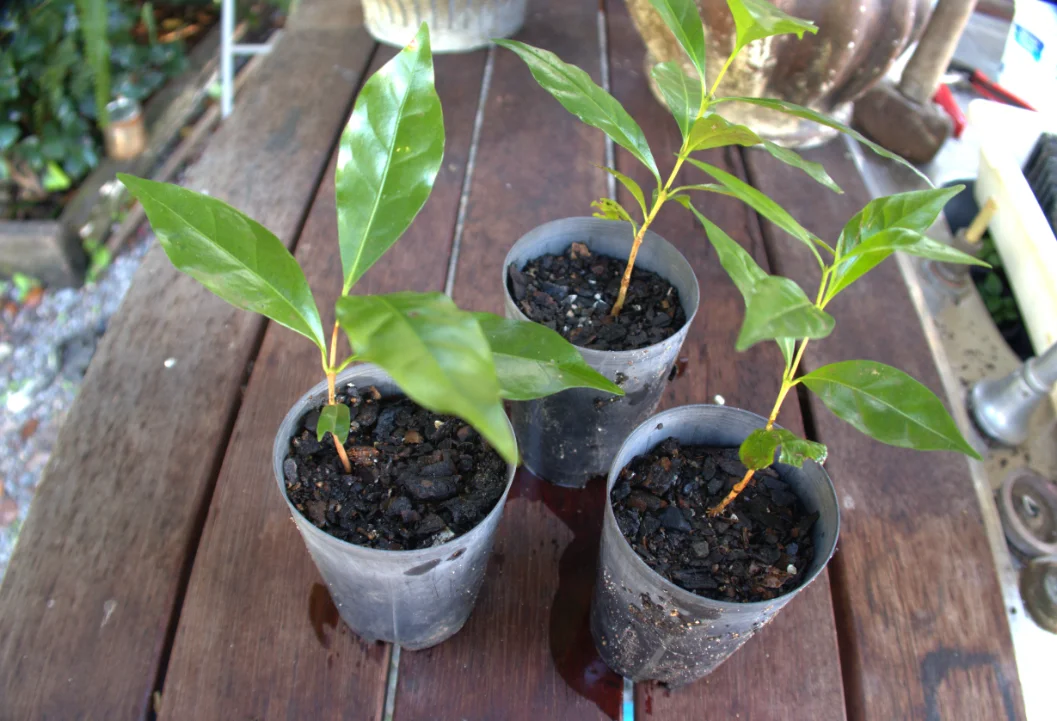
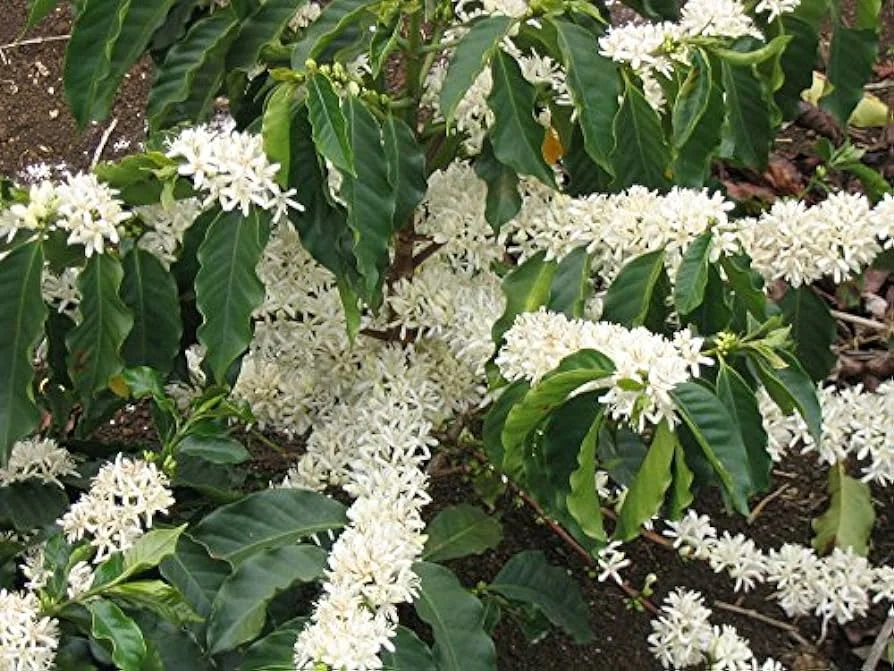
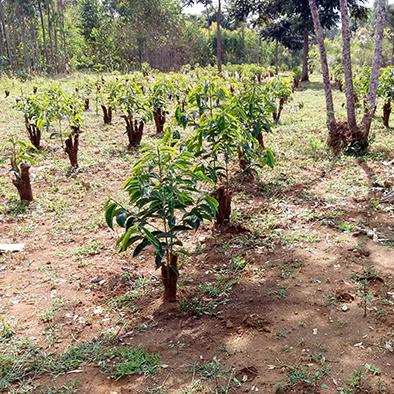
The Best Climate for Coffee
Given the right conditions, coffee is a very hardy, easy-to-grow small tree. Its native habitat is tropical highlands, but it’ll grow quite happily in a much wider range. For commercial growers, the ideal is an average daily temperature between about 18–28°C (65–80°F) and about 1,500–2,000 mm 60–80 inches) of rainfall. So, fairly mild and fairly moist, but ideally also a short dry period in the middle of winter during flowering. https://www.britannica.com/topic/coffee-productionThe Next Best Climate for Coffee
Once established, coffee is a pretty tough plant and well worth a go even in marginal conditions. If you don’t get at least 1000 mm rain or you have a long dry season, then some extra watering will help. If your winters are cold and frosty you’ll need to grow them in pots and move them around because they won’t survive a hard frost, but they can do quite well in pots. Up into the high 30s C (95F+) like I sometimes get here at my place they’ll want a little afternoon shade, plenty of moisture and plenty of mulch. Into the 40s (105F+) and even with enough water and shade they’ll struggle and the bean quality will be reduced.
Is Coffee Grown at high altitude better?
Short answer is yes. The long answer is no; the difference is small and for the home-grower so slight as to be irrelevant. At higher elevations the beans grow slower, are slightly more dense and have a slightly more complex flavour. However, Coffea arabica can be grown at sea-level and will produce high quality coffee. My altitude is 150m (500′) above seal level and the coffee is de-licious.Arabica vs. Robusta
Coffea arabica and Caffea robusta (Caffea robusta’s correct botanical name is Caffea canephora) are closely related but two different species. Arabica makes up 60% of world production and is generally considered to yield a better taste. Arabica is adapted to cooler, high-altitude zones and is more frost-tolerant. Robusta is higher in caffeine and is better adapted to lower altitude, higher temperatures and is less dependent on dry periods. It’s more adaptable but lacks arabica’s flavour complexity. It makes up over 40% of the crop and is mainly used in instant coffee.Coffee Seeds or Seedlings
Fresh is best. Coffee seeds tend to lose viability fairly quickly; within a few months, so only buy them during the harvest season. If you know someone with a tree pick a few fresh, ripe cherries or dig up a few seedlings from underneath. I’d try both if you can find them. The green beans you buy for roasting aren’t really worth trying, you’re better off roasting them. For planting fresh seed, remove the skin and separate the two beans; otherwise, the two seedlings crowd each other. Without the skin there is a lower risk of mould or rotting. Press into potting mix, cover with a thin layer and keep warm and moist but well drained. Fresh seed can take 6-8 weeks to germinate, up to 3 or 4 months if they’re a bit older or in cooler conditions, so a bit of patience is needed. Plant out at 12 months or when they’ve grown several pairs of true leaves. Germination is slow and growth in the first year or two can be quite slow. Seedlings are readily available online these days and you may see them at nurseries or markets. Purchasing established seedlings is the easiest and quickest path. My recommendation is to plant 2 or 3 seedlings and a handful of seeds.
Flowering and Fruiting
From a healthy seedling to its first flowers and fruit, enough to make your first few cups, it’s only 3 or 4 years. Then into maximum production after only 5 or 6. They are long-lived, 50 years plus and will eventually grow too tall; 4-5-6 meters ( 20′) or more if you let them. That’s way too tall for easy picking, even with a ladder, so expect to prune them (see below). There are dwarf varieties that may be less productive but easier to manage. My ‘K7’ variety trees start flowering here in SE Queensland (Australia) in early Spring, with extra flushes into summer. Masses of fragrant, white flowers cover the branches and make a dazzling display. Soon after, little green fruit (usually known as cherries) appears and slowly grow to full size. When they ripen they first turn pale yellow-orange, then pale red, then a deep crimson colour when fully ripe. Here, this usually starts mid-winter to spring, with some late cherries ripening well into summer. Each tree needs to be picked several times in a season as the cherries ripen in turn. When they are fully ripe and a deep red, they soften slightly and come away from the stem a bit more easily. They are edible and the thin (very thin) layer of flesh gets quite sweet. They are beautiful trees with dark green, glossy foliage and can make a great privacy hedge or even a feature tree, especially when they’re in full flower or laden with bright, red fruit. There are yellow and orange fruited varieties too, but I stick with red ones just because it’s a little easier to tell when they’re fully ripe. Coming back to those lower leaves and stems. You want coffee seedlings off to a good start and growing vigorously. Struggling and stunted plants, like older trees and shaded trees, tend to start losing the lower leaves and stems sooner and that means you lose the easy-to-pick, low-hanging fruit too. As they get taller and the lower trunk becomes bare and the growth gets higher you’ll find yourself picking above your head then up a ladder sooner than otherwise. So take extra care when they’re young and in hot, dry weather to retain as much of that lower foliage as possible because picking lower fruit from the ground is way easier than picking from up a ladder.
How to Prune Coffee
Sooner or later, you will need to prune them down to size and there are a few ways to go. One method is to just keep them lopped off at head-height and trim off the new shoots. A second method is stumping, which really needs to be done to every coffee tree eventually to renew their growth and vigour. Stumping is pruning them off hard at about knee height. They readily re-shoot. Rub off most of the new shoots, leaving 2-3 strong leaders to regrow. Two years later they’re producing fruit again. After each harvest, I’ll often stump down the tallest few if they were getting out of reach. Trees can be repeatedly re-stumped.
Watering and Fertiliser
To keep them growing vigorously, give them some compost and maybe a handful of complete fertiliser plus extra mulch a couple of times a year. Sufficient water is important and if rainfall is inadequate, give them a regular, deep watering, double the mulch and make sure the root zone never fully dries out.Pests and Disease
A few cherries are lost to pests, too few to worry about really and in my region with the K7 variety, I’ve seen zero disease. As I mentioned, they’re pretty tough. I did read some places have a risk of them becoming a pest themselves. Seedlings will germinate under the trees. I keep an eye on the surrounds here but I don’t see any growing. Check with local weed lists. I have had a couple blow over in strong wind, but I think they were a bit root-bound in their pots and probably never really established great root systems. For a deeper dive into coffee horticulture have a read of this grower’s manual from the Australian Rural Industries Research and Development Corporation.How Many Coffee Trees Do I Need?
2 people drinking 2 large cups per day each at 18 gm per cup equals about 26 kg per year. I started with 7 K7 seedlings and expanded by propagating a few from my own seed but mostly by just transplanting some from underneath the first 7. That quickly built up to about a total of 30. With 20 productive trees I can produce around 30 kg each year: all we can drink plus some to give away. Here is how a typical cycle might work: I have about 20 productive trees, plus 10 trees that are pruned and not producing. Of those 10, 5 were pruned last year and they’ll start fruiting next year. The other 5 were just pruned, so they’ll take 2 years before they start to fruit again. Each year, prune the tallest 5. I didn’t set out to be fully self-sufficient in coffee; I just wanted to grow some of my own as a fun experiment. But homegrown and roasted coffee tastes sooo delicious and it was so much fun and so easy it just sort of happened. Apart from the occasional cafe, all I drink is my own free coffee. Even when we go away, I’ll grind and pack enough to last instead of paying for inferior coffee.Conclusion
Not only is this coffee free, it’s absolutely delicious: medium acidity, smooth, nutty, chocolatey flavours with even a hint of licorice. This is a very satisfying and rewarding hobby aside from the savings and I truly hope some of you are inspired by this series to have a go yourself. Quite often, about halfway through my first cup in the morning, I find myself in awe of nature at how something so amazing comes out of just dirt and the thin air. Our trees have grown, flowered and now finally the fruit is turning red. In the next post we’ll be picking and pulping it.Further readinghttps://www.cic.org.pg/wp-content/uploads/2021/08/52029_CIC-Handbook.pdf https://www.britannica.com/topic/coffee-production https://agrifutures.com.au/wp-content/uploads/publications/14-029.pdf https://worldcoffeeresearch.org


